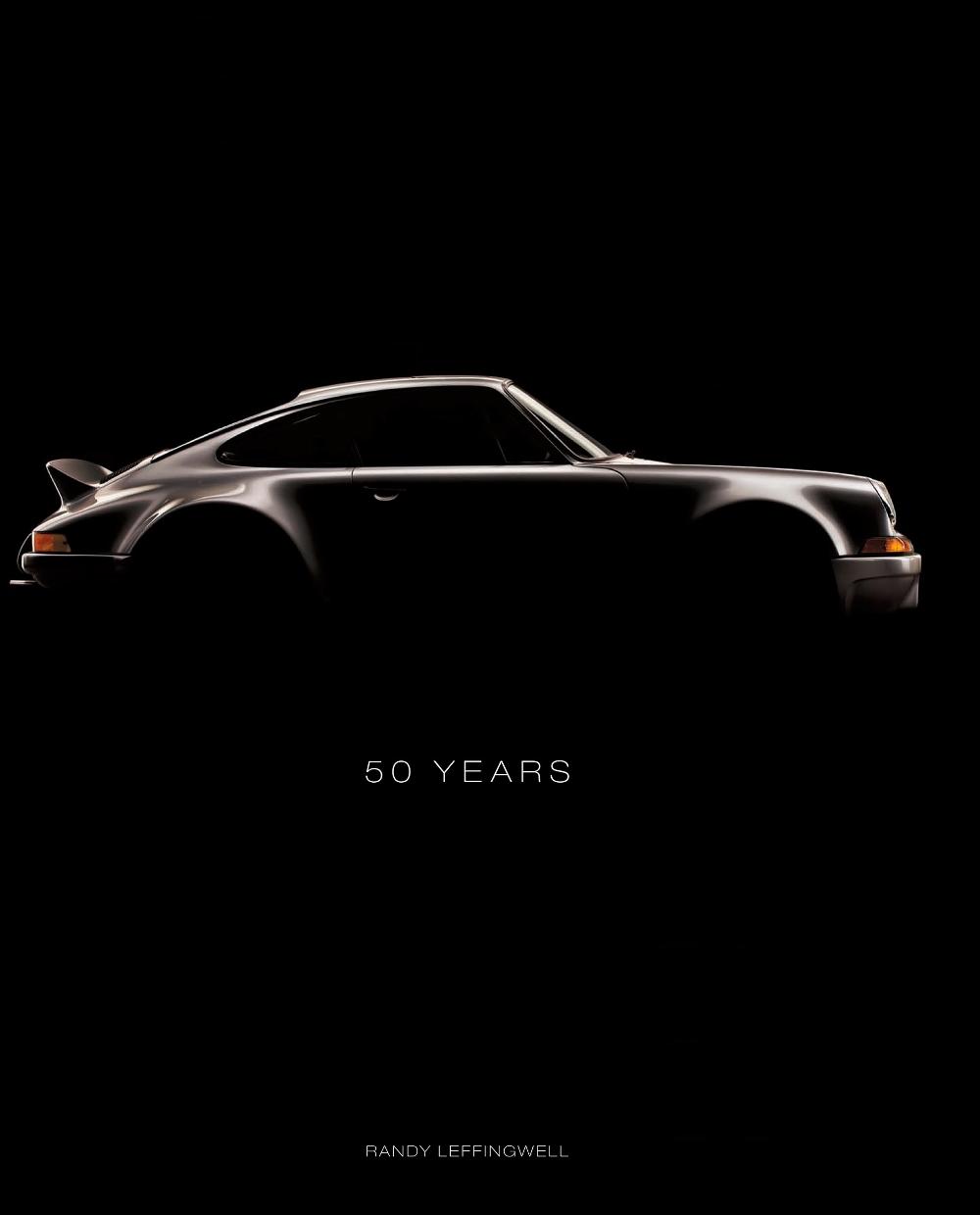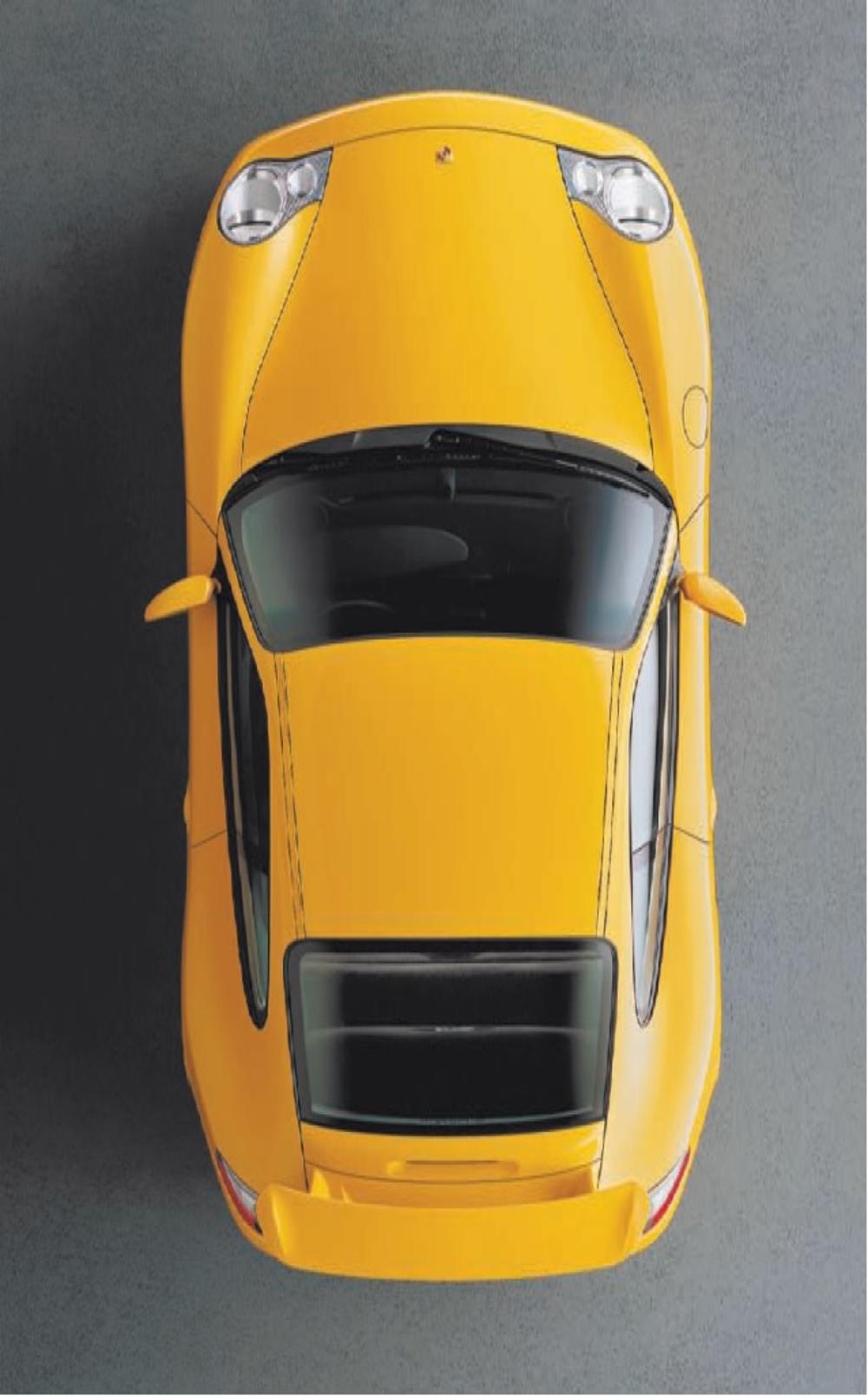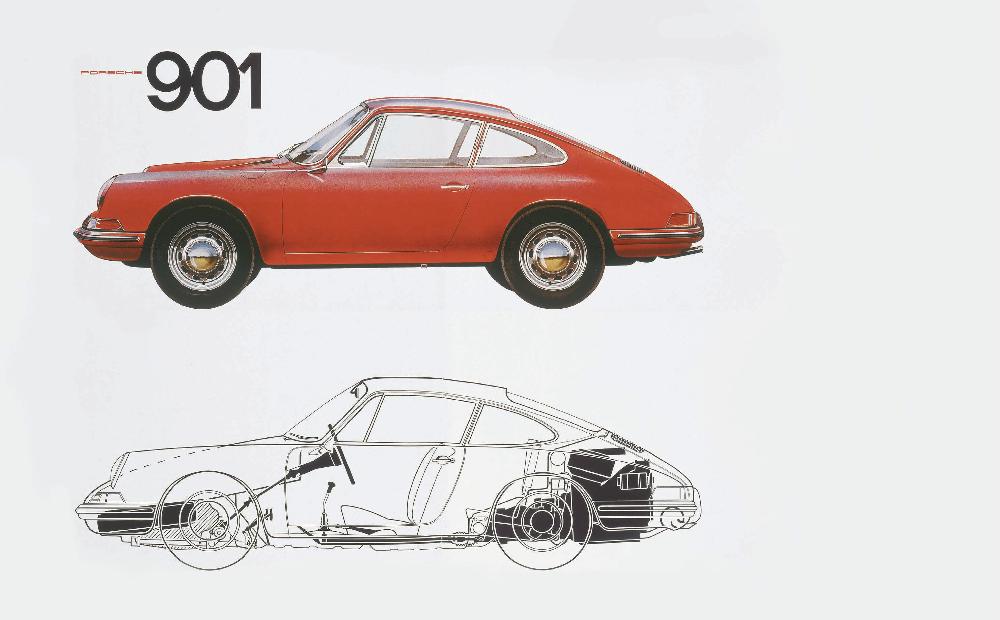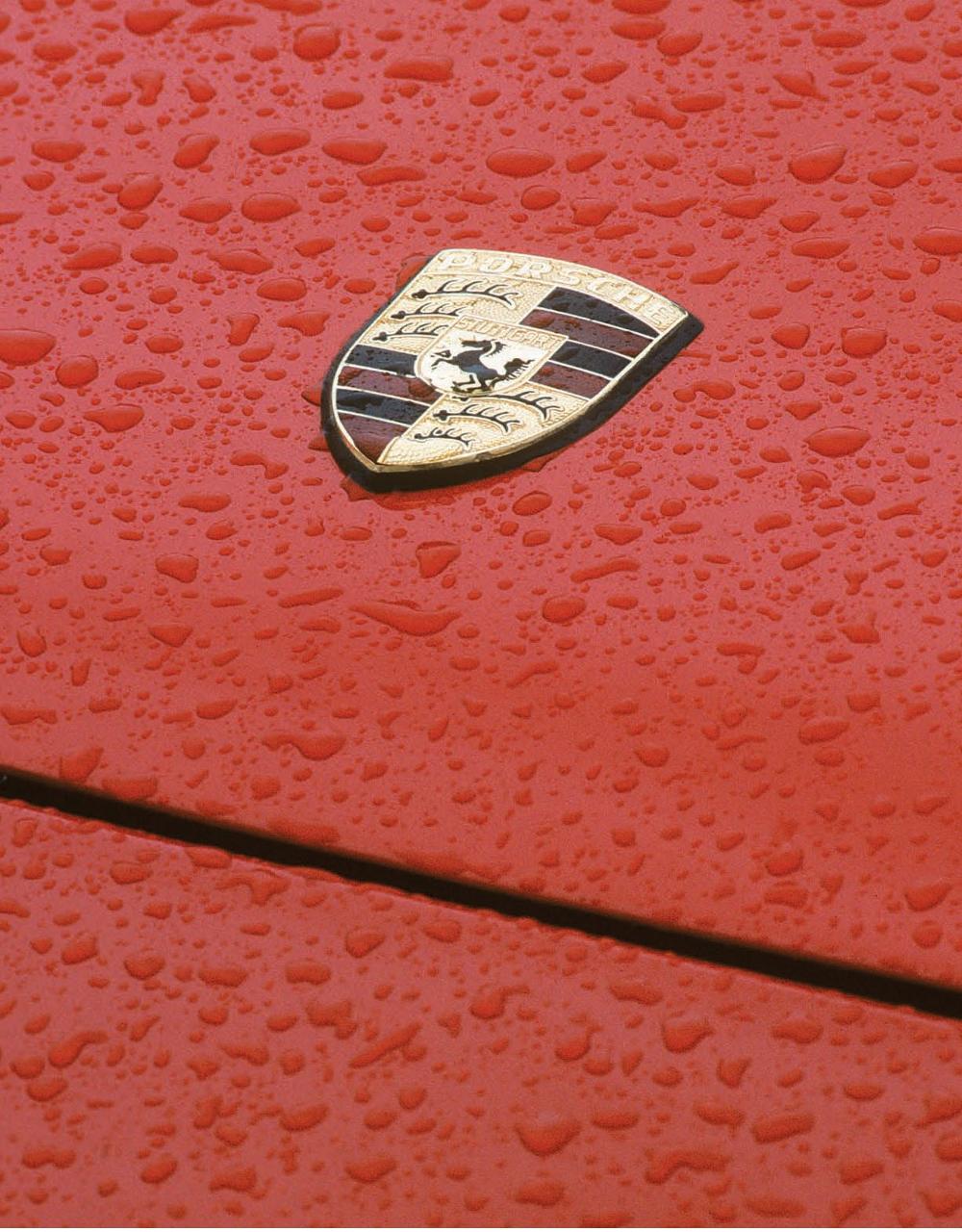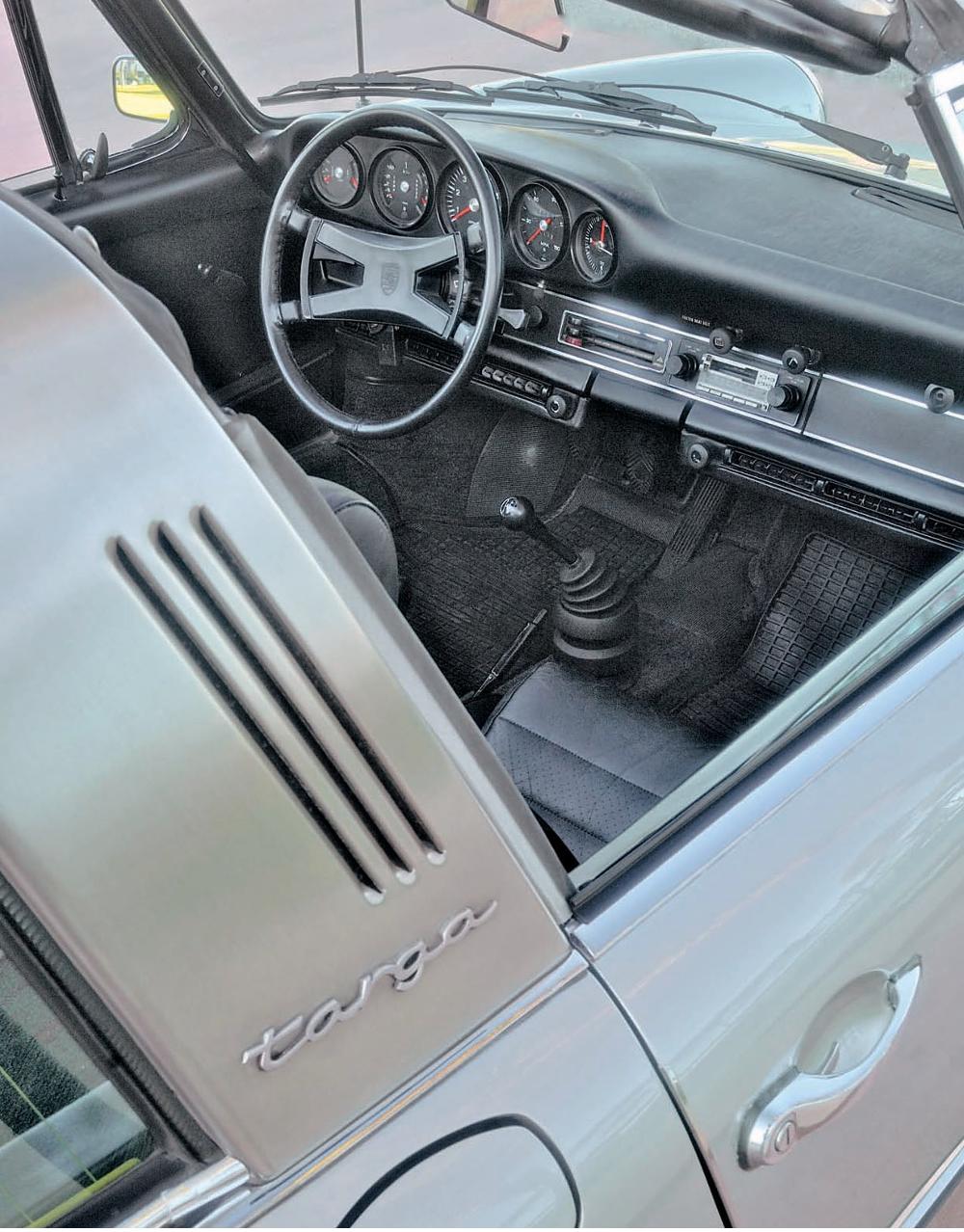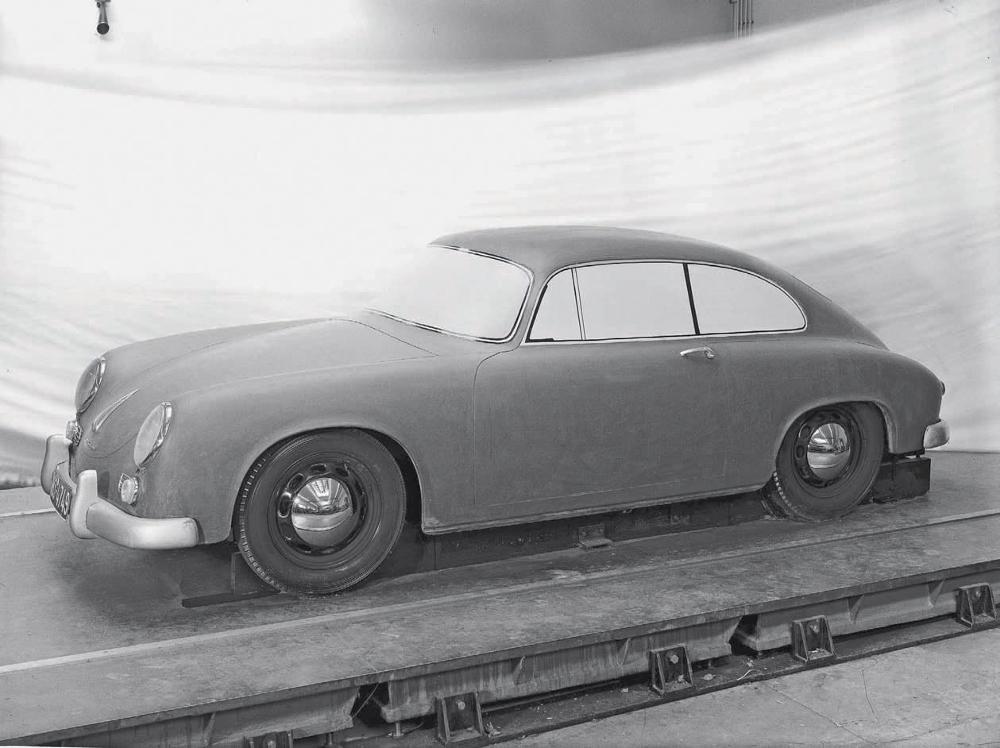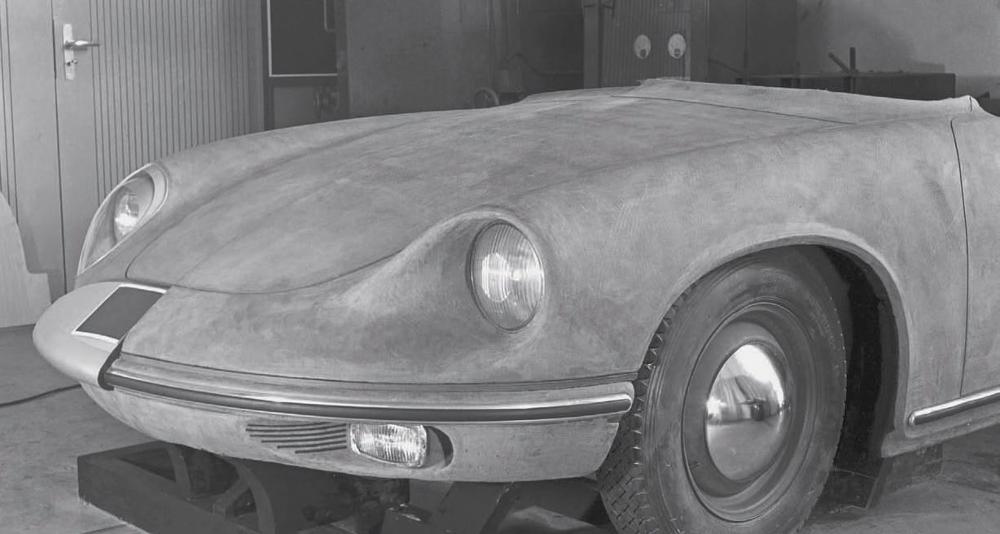Associated albums
ACKNOWLEDGMENTS
My thanks go first and foremost to two great, hardworking Porsche historians, Dieter Landenberger, head of Porsche Archiv, and Jens Torner, Manager of Porsche Visual Archiv. These two friends have encouraged my interviews, investigations, and reporting on this project with its several twists and turns. What’s more, both of them, as talented photographers, have images in this book for which I am very grateful. As I have chronicled the Porsche 911 history over a period of years, a number of participants have shared their experiences and insights with me. I wish to thank: Dipl. Ing. August Achleitner; Kurt Ahrens, racer; Dipl. Ing. Herbert Ampferer; Dipl. Ing. Jürgen Barth, engineer/racer, retired; Dipl. Ing. Hans-Peter Bäuerle, retired; Dipl. Ing. Tilman Brodbeck, retired; the late Dipl. Ing. Helmuth Bott; Dipl. Ing. Wolfgang Dürheimer, former executive vice president, Research & Development; Vic Elford, racer; Dipl. Ing. Peter Falk, retired; Dipl. Ing. Helmut Flegl, retired; George Follmer, racer; the late Dipl. Ing. Ernst Fuhrmann; Tony Hatter, Style Porsche; Jacky Ickx, racer; Dipl. Ing. Bernd Kahnau, retired; Dipl. Ing. Stefan Knirsch; Dipl. Ing. Eugen Kolb, retired; Dipl. Ing. Hartmut Kristen, Matthias Kulla, Style Porsche; Dipl. Ing. Roland Kussmaul, retired; Harm Lagaay, Style Porsche director, retired; Pinky Lai, Style Porsche; the late Tony Lapine, Style Porsche; Grant Larson, Style Porsche; Herbert Linge, engineer/racer, retired; Dipl. Ing Horst Marchart, retired; Dipl. Ing. Hans Mezger, retired; Steve Murkett, Style Porsche; Klaus Parr, Historical Archive, retired; Dipl. Ing. Walter Naher, retired; Ed Peter, vice president U.S. Sales, retired; Walter Röhrl, racer; Dipl. Ing. Valentin Schäffer, retired; Dipl. Ing. Michael Schlätzle; Dipl. Ing. Gerhard Schröder, retired, and Irene Schröder; Peter Schutz, chairman, retired; Dipl. Ing. Norbert Singer, retired; Dick Soderberg, Style Porsche, retired; Dipl. Ing. Otto Soeding, retired; Dipl. Ing. Dr. Heinz Soja; Dipl. Ing. Rolf Sprenger, retired; Dipl. Ing. Gunther Steckkönig, engineer/racer, retired; and Dipl. Ing. Thomas Wasserbach. I am deeply grateful to the late Ferdinand Alexander Porsche, Zell am See, and to his father, the late Professor Ferdinand Anton Porsche, Stuttgart, for taking the time more than a decade ago to speak with me for several hours about their work and philosophy. Several individuals played important roles in completing this book and I really want to thank Gill Campbell, CEO/general manager, Mazda Laguna Seca Raceway, as well as John Clinard, Sean Cridland, Dave Engelman/Porsche Cars North America, Warner Hall, Brian Hoeweler, Riley Kelley, Yvonne Knotek/Porsche Archiv, Richard Newton, Mark Schlacter, Freeman Thomas, Barry Toepke, Dipl. Ing. Christian Will/Porsche, and Jeff Zwart for access, courtesies, ideas, images, and information. I am most grateful to Dave Wendt for his wonderful and evocative cover image. Finally I want to express my gratitude to Pete Stout, editor, Porsche Panorama, for sorting through this history with me. His insight and perception are without equal. Randy Leffingwell — Santa Barbara, CAPROLOGUE
For decades, the “style” inside Style Porsche, the modern-day name for the company’s automotive design department, was to attribute credit for various cars to the department and its chiefs. Tony Lapine long received praise for the startling 928. Harm Lagaay was acknowledged for the 993, 986, and 996 siblings. But interviews with both men over a period of 20 years let the truth out, sometimes with a laugh attached. “The 928?” Lapine said, always one to answer one question with another. “No, that was Wolfgang Möbius. My job was to stand at the door and not let anyone in to distract my guys from their work.” Lagaay released concept sketches showing Grant Larson’s name under Boxster concepts and production models, Pinky Lai’s name alongside 996 sketches, Tony Hatter with GT1 and Carrera GT ideas, and Steve Murkett with his vision of the Cayenne. He reiterated Lapine’s characterization as often being the door guard and staff protector. Modern-day design chief Michael Mauer followed a similar path. After an initial “You know, it really is a team effort,” the name of 991 stylist Peter Varga slipped out. It was Varga’s aggressive rear character line that redefined the 911. Harm Lagaay described other responsibilities of the design chief, such as maintaining his designers’ focus with a well-timed comment or a discussion here and there, keeping peace among them, providing them inspiration and motivation, and otherwise ensuring them a proper atmosphere in which to do their work. Each of these men did a great deal more, guiding and directing design through deft gestures and thoughtfully chosen words, through rhetorical questions and sometimes suggestions that minute adjustment of a single line might be worth a look. The ability to draw can be less necessary than possessing the skill to communicate, to articulate, to motivate. Which prompts a glance back into history: was there a Wolfgang Möbius, a Grant Larson, or a Tony Hatter on Ferdinand Alexander Porsche’s design staff? Did F. A. Porsche serve one of those roles himself, working as designer under someone else’s supervision? Did this set a pattern and a precedent for those who followed him into the job of design boss at Porsche? The direct answer to these questions is yes. What you read here may contradict what you know about Porsche 911 history. Some of this information simply was not available before now.
COLLISION COURSE
BETWEEN NEXT AND NEW For two decades Erwin Komenda had success providing attractive vehicles to Porsche. By the early 1950s, that was about to change. After meeting Ferdinand Porsche at Steyr in Austria in 1929, Komenda moved to Daimler-Benz. In late 1931, he joined Ferdinand Porsche’s company where, among other projects, he created the shapes of the legendary Auto Union Grand Prix cars with Porsche’s long-trusted aerodynamics engineer Josef Mickl. While working with Ferdinand, he fashioned the Volkswagen. He morphed it into the Typ 64K10 for the 1939 Berlin-Rome road race, an intra-national competition invented to show off Germany’s fast, smooth Autobahn. While the race never occurred, Komenda and his craftsmen assembled three of the sleek Typ 64 coupes. After World War II, Komenda adapted the forms and shapes of the Typ 64 into a prototype mid engine roadster in 1948 and from there, a series of production coupes and cabriolets in the 1950s. As an engineer, he formed the car bodies to surround the chassis, suspension, drivetrain, and passenger components in the most efficient way possible, working from the inside out. His job title at Porsche was head of the bodywork construction department and his training and experience convinced him that rounded forms imparted great strength to thin steel. He maintained that door and deck lid cuts set well inboard of curved metal welding seams were less likely to stress or tear the panels. These rules shaped his car bodies as characteristically as any panel beater’s hammer.

Following the death of his father in January 1951, Ferry Porsche improved his 356 series performance by supplementing the original Volkswagen-derived 1,086cc 40-horsepower engines with a 1,286cc 44-horsepower engine and in October, the 60 horsepower 1,488cc version. Meanwhile Komenda showed Ferry his ideas for what might follow the Typ 356, displaying to him the Typ 530 four-seater. In this scale model Porsche saw an enlarged 356. By this time Komenda had a chief modeler named Heinrich Klie, a former confectioner with great skill in molding breads and cakes. Porsche hired Klie in 1951 to establish the model shop. Klie and Komenda stretched the 2,100mm (82.7-inch) wheelbase of the 356 out to 2,400 (94.5 inches) to provide room for rear seat adult passengers. The boss hadn’t asked for these new models; Komenda simply was doing his job, keeping something new or different in front of Ferry’s eyes. Porsche admitted later to several historians that he had not yet given any thought to what might replace or supplement his 356 by this time. He had the Typ 514SL, widely known as the 356SL, in his race shops with engineers preparing to take the coupe with its streamlined covered wheel openings to compete at Le Mans, and he had the Typ 540 to think about. First marketed as the America Roadster, Klie and Komenda had bodied the Typ 540 for the U.S. markets. The short-run series of 17 cars sold out and its appearance and its racing performance generated big interest. The guardian of Typ numbers and company chief designer Karl Rabe recycled the 540 designation onto its successor, “the Sport Cabrio.” The outside world called that car the Speedster.
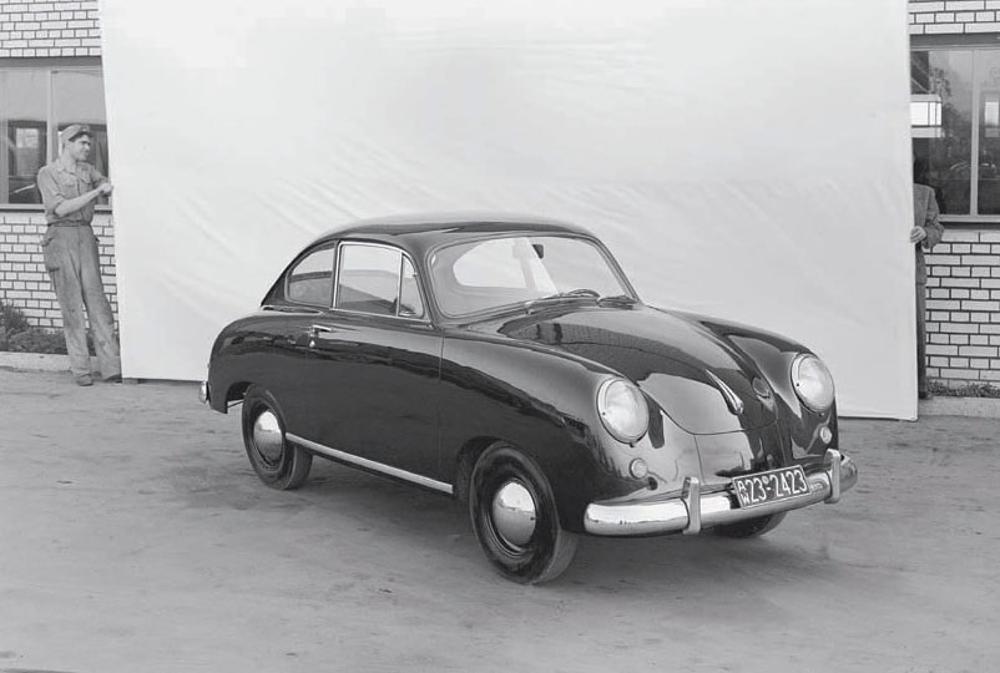
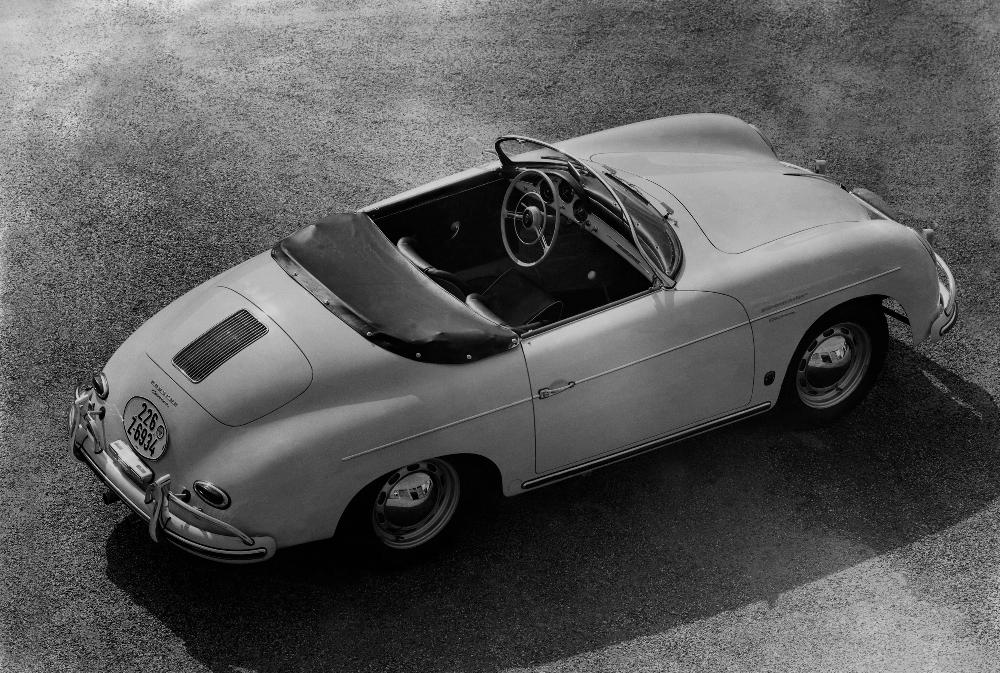
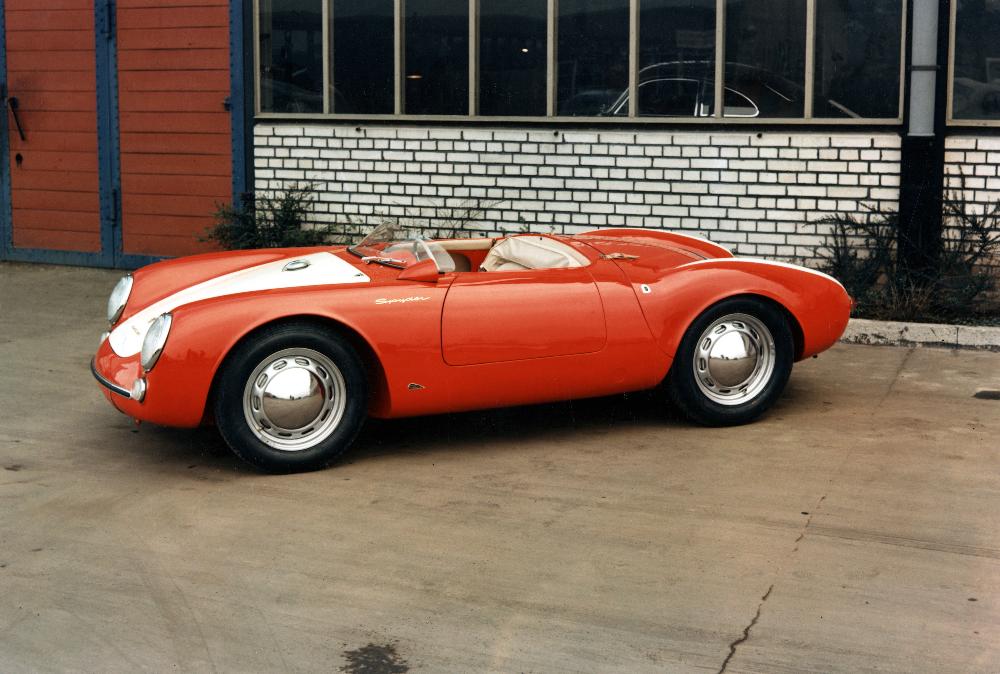
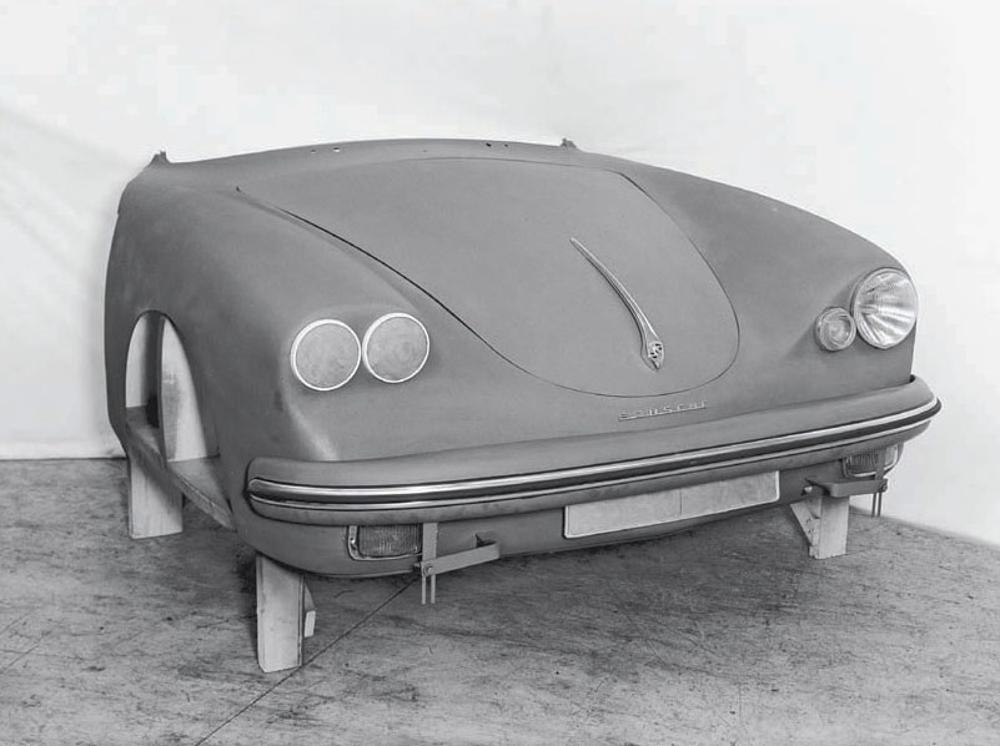
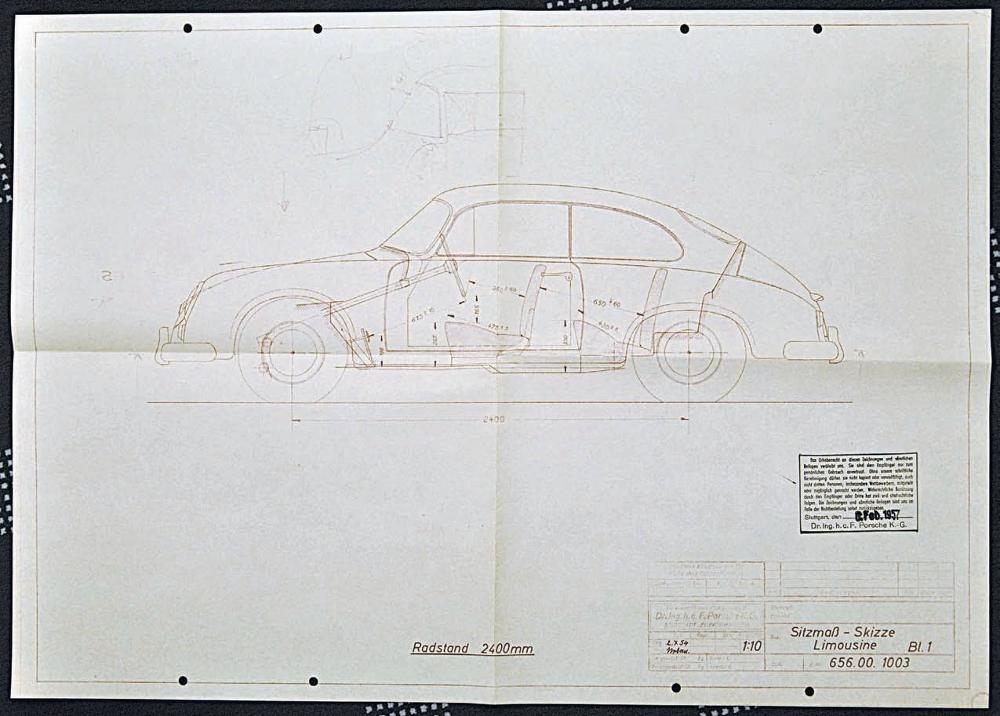
Page 1
Next Page
